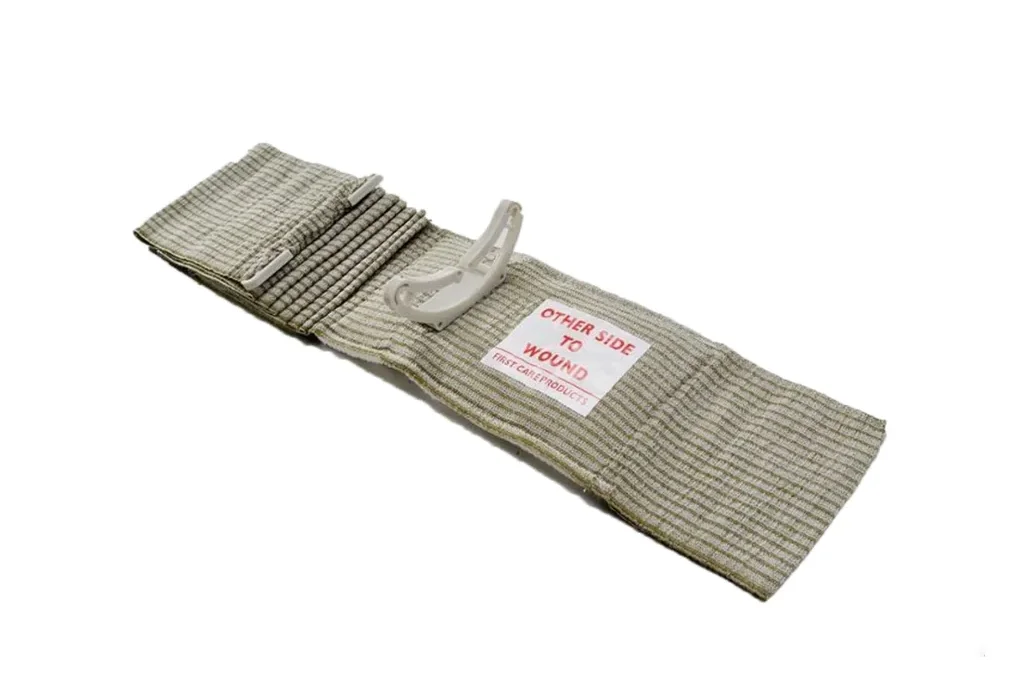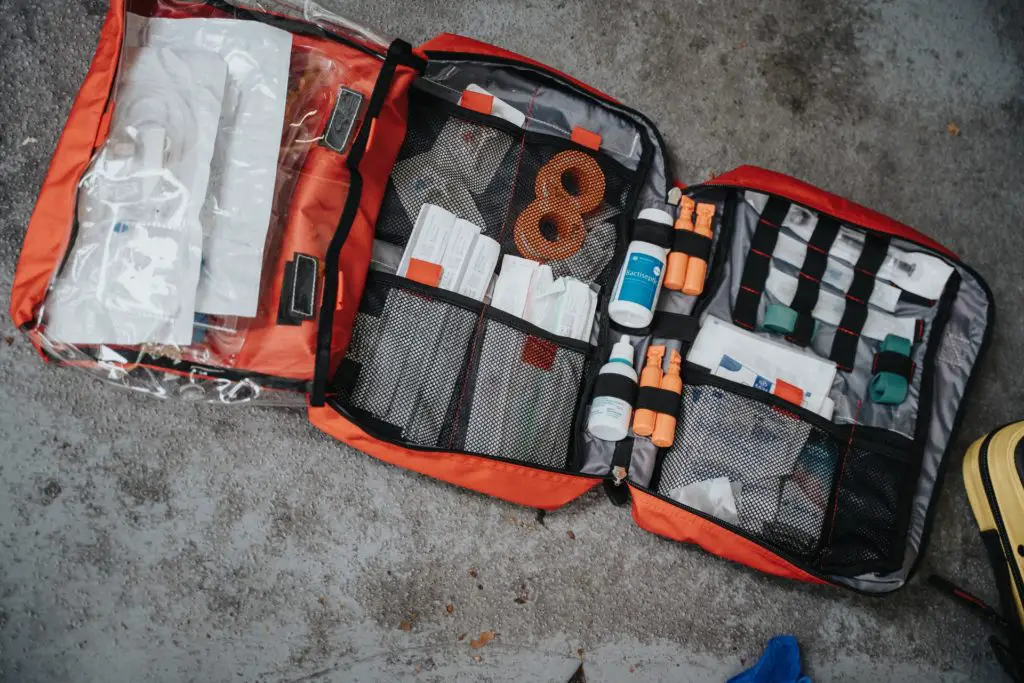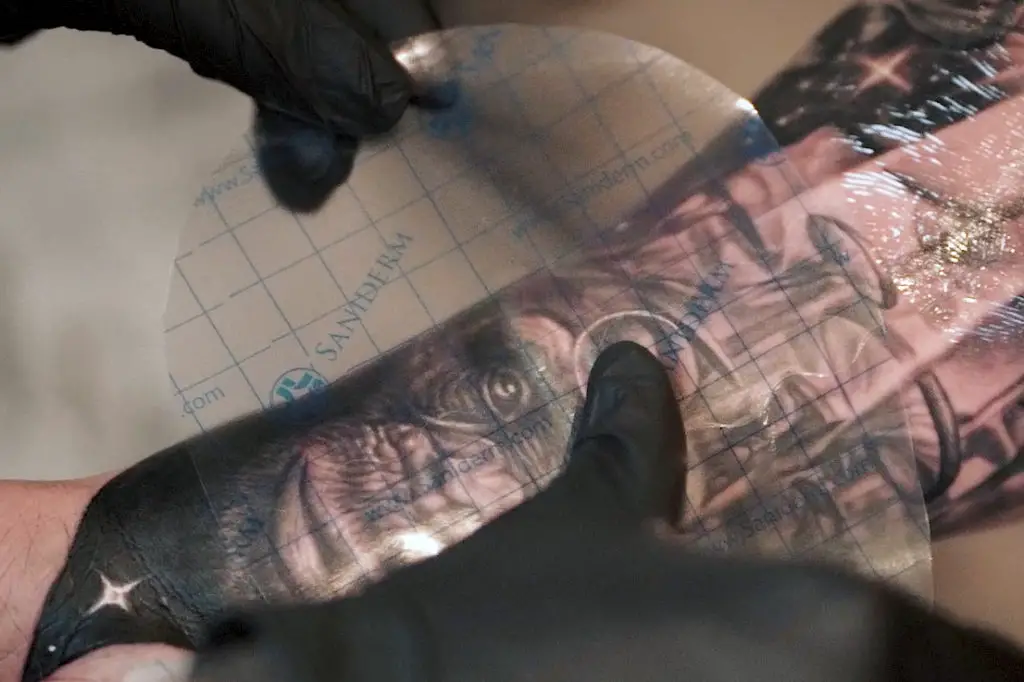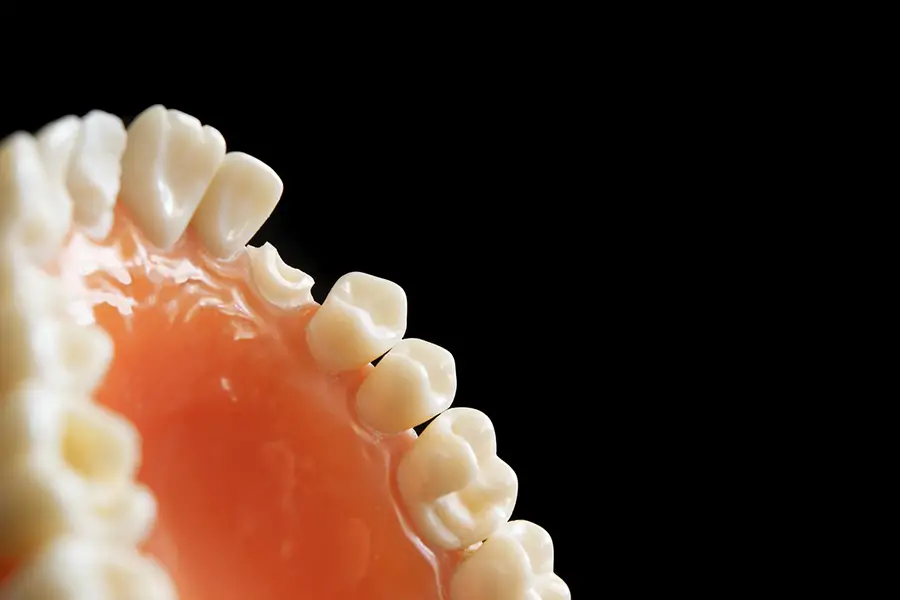Preparing a first aid kit can be a daunting task. Many people will buy a pre-assembled kit without taking the time to customize or upgrade it. An effective life-saving tool that is not common in typical off-the-shelf kits is the Israeli Bandage. This article will explain what they are and how they are used so you can decide whether or not to add one to your kit. We also recommend a few options at the end.
What is an Israeli Bandage?
An Israeli bandage is a type of emergency bandage designed for use in traumatic wound care. It’s a sterile and non-adhering pressure bandage used to stop bleeding. It also helps to protect the wound after it’s been applied.
An Israeli bandage has three major components: an absorbent pad (dressing) on an elastic wrap, a pressure applicator, and a closure bar. The bandage is typically 6″ wide but also comes in 4″ and 8″ widths. It has the added benefit of being designed so that you can apply it to yourself if help isn’t around.
Where does the name come from?
The Israeli bandage received its name because it was developed by an Israeli military medic, Bernard Bar-Natan, during his service in the Israel Defense Forces. Bar-Natan developed the bandage to respond to the need for an effective and efficient way to treat severe bleeding in the field. The bandage was designed to be easy to use, even under the stress of combat, and to provide a high degree of compression to control bleeding. Since it was developed by an Israeli and first used by the Israeli military, it’s been dubbed the “Israeli bandage.” They have since been adopted for use by the U.S. military.
How does an Israeli bandage work?
The device works as any other pressure bandage: by using an absorbent dressing to soak up blood while pressure is applied to the wound to slow or stop the bleeding.
The closure bar is designed to keep the bandage in place without manual pressure from a first aid provider, which frees them up to address other issues.
How do you use an Israeli Bandage?
Using an Israeli bandage is a relatively simple process, but it’s essential to follow the instructions carefully in order to get the best results. Here are the general steps for using an Israeli bandage:
- Clean the wound: If the bleeding isn’t life-threatening, take the time to make sure the wound is clean and free of debris. If necessary, clean the wound with water and soap or an antiseptic solution.
- Remove the bandage from the packaging.
- Apply the bandage: Place the pad over the wound and wrap the bandage around the limb or area, ensuring the pad is directly over the wound. Slide the bandage into the slot on the top of the pressure applicator. The pressure applicator should be located directly over the wound.
- Pull back on the pressure applicator with the bandage in the opposite direction until adequately tightened.
- Wrap the remainder of the bandage on itself until the end. Use the closure bar to keep the bandage in place.
- Monitor the wound: Check the wound regularly to make sure the bandage is still in place, and the bleeding has stopped. If the bleeding continues, seek medical attention.
As always, if the bleeding is severe, it’s best to seek medical attention as soon as possible. The Israeli bandage is not meant to replace professional medical care and should only be used as a temporary measure until medical help is available.
Is an Israeli bandage the same as a pressure bandage?
An Israeli bandage is a type of pressure bandage. A pressure bandage is a bandage that is used to apply pressure to a wound in order to control bleeding. The Israeli bandage is a specific type of pressure bandage that is designed for use in emergency situations, such as battlefield injuries or other traumatic injuries. So, an Israeli bandage is a type of pressure bandage but not all pressure bandages are Israeli bandages.
What are other types of compression bandages?
There are several types of compression bandages that can be used to control bleeding, stabilize injuries, and support healing. Some examples include:
- ACE bandages: ACE bandages are elastic bandages that can provide compression and support for injuries or sprains. They are commonly used to wrap around the ankle, knee, or elbow to provide support and reduce swelling but can be used as a pressure bandage when used with a separate absorbent dressing.
- Coban bandages: Coban bandages are also known as cohesive bandages; they are stretchy and stick to themselves but not to skin or hair and can be used for compression and support for injuries or sprains. These also need a separate dressing.
- Elastic bandages: Elastic bandages are similar to ACE bandages but are made of a more stretchy material and typically are used for more severe injuries or sprains.
These examples don’t include a dressing, and require the first aid responder to create one with gauze or other similar materials.
Is an Israeli Bandage the same as a tourniquet?
An Israeli bandage and a tourniquet are both devices used for controlling severe bleeding, but they are different in their design and usage.
An Israeli bandage is a type of pressure bandage designed for use in emergency situations, such as battlefield injuries or other traumatic injuries. It’s a compression bandage that covers and compresses a wound and controls bleeding by adding pressure.
A tourniquet, on the other hand, is a device applied directly to the skin and tightened to stop blood flow to a limb. It’s used to control severe bleeding that can’t be stopped with direct pressure. Tourniquets can be made of different materials, such as rubber straps, nylon straps, or even a improvised with common objects, but all of them should be able to be tightened as needed.
Recommend Israeli Bandages
Do you think that a Israeli bandage will be a good addition to your first aid kit? Below are a few recommendations.
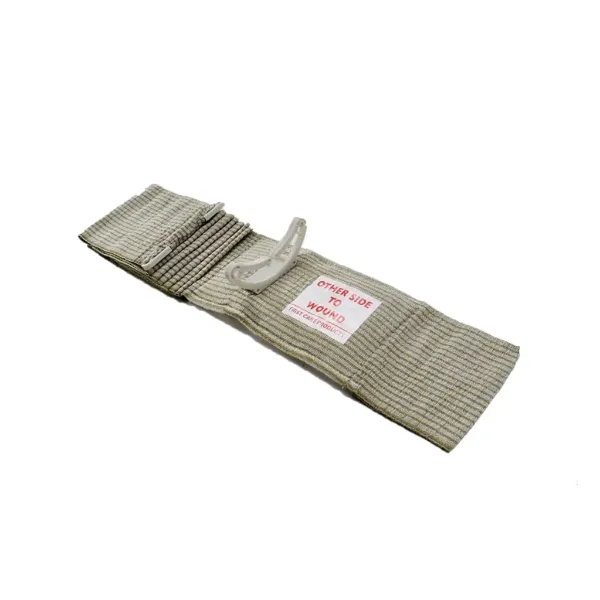
This single Israeli Bandage from Forrest Safety Products is 6″ wide and comes vacuum sealed.
Here is a highly rated 3-pack that also comes vacuum sealed and available on Amazon.
If 6″ is too wide, here is a 4″ option, also available on Amazon.

